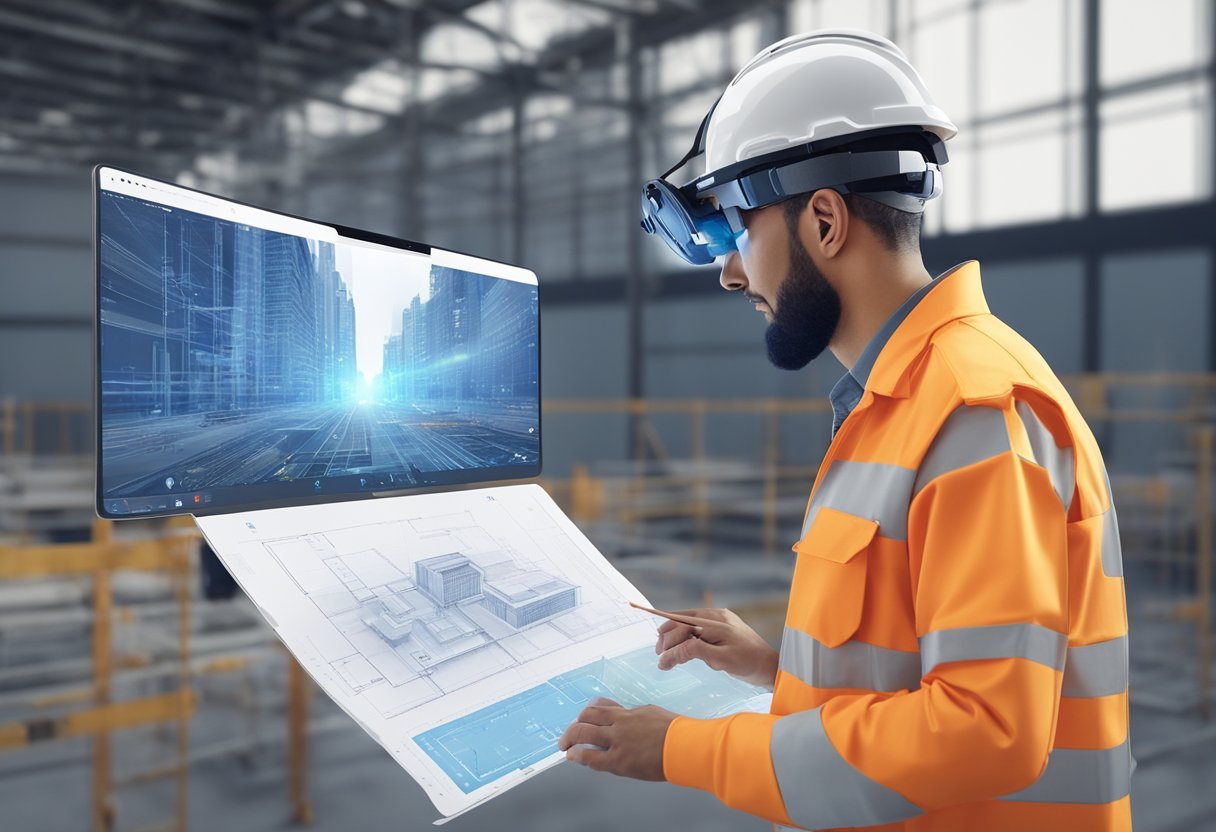AR design is a field that focuses on creating digital elements that can appear over real-world views. This design approach offers a unique opportunity to enhance the way people see and interact with the world. AR designers create experiences that blur the line between reality and digital content, often via smartphones or headset devices. In this blog post, we will discuss the concept of AR design. I will share with you 10 ar design ideas to help you get started.
AR design is different from virtual reality (VR) design, where users are isolated from the real world. In contrast, AR designers aim to enhance the real world by adding digital elements that complement the user’s experience. Examples of AR design include the popular game Pokemon Go, which overlays digital creatures on top of real-world views, and Adobe Aero, which allows users to create immersive storytelling experiences in mobile AR.
Designers in this field must consider several factors, such as the user’s environment, the type of device being used, and the level of interactivity required. As AR technology continues to evolve, AR designers will play a crucial role in creating experiences that are both engaging and user-friendly.
Understanding AR Design
AR design is a new and exciting field that combines the digital and physical worlds to create immersive experiences for users. It is important to understand the principles of AR design, the key differences between AR and VR, and the role of immersion in AR.
Principles of AR Design
AR design should focus on providing value to the user, rather than just showcasing technology. It involves creating an intuitive interface that makes it easy for users to interact with the virtual content. Contextual Design is an important aspect of AR design as it takes into account the user’s environment. This involves considering the real-world environment and how the digital content can be seamlessly integrated into it.
AR vs. VR: Key Differences
AR and VR are both technologies that create immersive experiences for users, but they differ in their approach. AR enhances the real-world environment with digital content, while VR creates a completely new digital environment for users to interact with. AR is more suited for real-world applications, such as gaming or education, while VR is more suited for immersive experiences, such as virtual tours or simulations.
The Role of Immersion in AR
Immersion is an important aspect of AR design as it creates a sense of presence and engagement for the user. This can be achieved by using sound, haptic feedback, and visual cues to create a seamless integration between the digital and physical worlds. Immersion can also be enhanced by considering the user’s interaction with the environment, such as how they move and interact with the digital content.
AR design is a new and exciting field that combines the digital and physical worlds to create immersive experiences for users. Understanding the principles of AR design, the key differences between AR and VR, and the role of immersion in AR is essential for creating successful AR applications.
AR Design Tools and Software
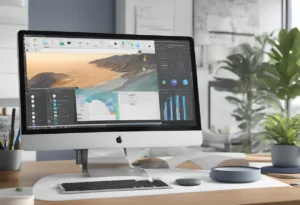
When it comes to designing AR experiences, there are a variety of tools and software available to help bring your ideas to life. In this section, we will explore some of the most popular AR development platforms and software options, including Unity, ARCore, and Adobe Aero.
Popular AR Development Platforms
Unity is one of the most popular development platforms for creating AR experiences. It offers powerful tools to make rich, deeply engaging AR experiences that intelligently interact with the real world. Unity supports both mobile AR on iOS and Android devices, as well as desktop AR on macOS and Windows. It also has a large community of developers and a wealth of resources available to help you get started.
ARCore is Google’s platform for building AR experiences on Android devices. It provides tools for motion tracking, environmental understanding, and light estimation, allowing developers to create AR apps that are aware of their surroundings. ARCore is compatible with a wide range of Android devices and provides a robust set of APIs for building AR experiences.
Designing with Unity and ARCore
Unity and ARCore can be used together to create powerful AR experiences. Unity provides a powerful development environment with a wide range of tools and resources, while ARCore provides the underlying technology for motion tracking, environmental understanding, and light estimation. Together, they enable developers to create immersive AR experiences that are both engaging and interactive.
Adobe Aero and AR Creativity
Adobe Aero is a powerful tool for creating AR experiences on mobile devices. It provides an intuitive way to build, view, and share robust immersive storytelling experiences in mobile AR. Adobe Aero is available on iOS and as a public beta for desktop on macOS and Windows. It allows designers to create interactive AR experiences without the need for coding or complex development tools.
There are a variety of tools and software available for designing AR experiences, each with its own strengths and weaknesses. Unity and ARCore provide a powerful development platform for creating immersive AR experiences, while Adobe Aero offers an intuitive way to create interactive AR experiences without the need for coding or complex development tools.
Creating Engaging AR Experiences
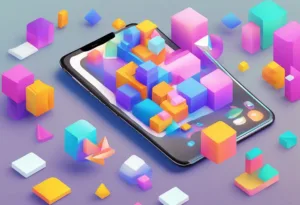
AR design is all about creating immersive experiences for the audience. The goal is to create an experience that is engaging and fun, and that keeps the user coming back for more. In order to achieve this, designers need to focus on user interaction and engagement, incorporating digital objects in AR, and using machine learning to enhance the experience.
User Interaction and Engagement
User interaction and engagement are key to creating an immersive experience in AR. Designers need to focus on making the experience as interactive as possible, allowing users to engage with the AR environment in a natural and intuitive way. This can be achieved through the use of gestures, voice commands, and other interactive elements.
One way to enhance user engagement is by incorporating social media into the AR experience. This allows users to share their experiences with others, creating a sense of community around the AR experience. Designers can also use gamification to increase engagement, by adding elements such as rewards, challenges, and leaderboards.
Incorporating Digital Objects in AR
Incorporating digital objects in AR is another important aspect of creating an engaging experience. Designers need to focus on creating digital objects that are realistic and that fit seamlessly into the AR environment. This can be achieved through the use of 3D modeling and texturing, as well as through the use of lighting and shading techniques.
Another way to incorporate digital objects in AR is by using machine learning to enhance the experience. For example, designers can use machine learning algorithms to create realistic physics simulations, allowing users to interact with digital objects in a more natural and intuitive way.
Machine Learning and AR
Machine learning is becoming increasingly important in AR design, as it allows designers to create more intelligent and responsive experiences. For example, machine learning algorithms can be used to track user behavior and preferences, allowing designers to create personalized experiences that are tailored to the individual user.
Machine learning can also be used to create more realistic and immersive environments. For example, designers can use machine learning algorithms to create realistic physics simulations, allowing users to interact with digital objects in a more natural and intuitive way.
Creating engaging AR experiences requires a focus on user interaction and engagement, incorporating digital objects in AR, and using machine learning to enhance the experience. By following these principles, designers can create immersive and engaging experiences that keep users coming back for more.
AR Technology and Hardware

Augmented Reality (AR) design involves creating digital experiences that blend with the real world. This requires the use of hardware that can capture and display both the real and virtual worlds. In this section, we will discuss the technology and hardware used in AR design.
Mobile Devices and AR
Mobile devices are the most common hardware used in AR design. They offer portability and accessibility, making them ideal for creating AR experiences that can be accessed anywhere. Mobile devices use sensors such as cameras, gyroscopes, and accelerometers to capture the real world and display virtual content. Examples of mobile devices used in AR design include smartphones and tablets.
Headsets and Wearables
Headsets and wearables are another type of hardware used in AR design. They offer a more immersive experience than mobile devices, as they cover the user’s field of view. Headsets and wearables use sensors and displays to capture and display the real and virtual worlds. Examples of headsets and wearables used in AR design include Microsoft HoloLens, HTC Vive, and Oculus Rift.
AR in Gaming and Entertainment
AR is widely used in gaming and entertainment. It offers a unique and immersive experience that traditional gaming cannot provide. AR gaming involves creating digital experiences that blend with the real world, allowing players to interact with virtual objects in the real world. AR entertainment involves creating digital experiences that enhance real-world experiences, such as watching a movie or attending a concert.
AR design requires the use of hardware that can capture and display both the real and virtual worlds. Mobile devices, headsets, and wearables are the most common hardware used in AR design. AR is widely used in gaming and entertainment, offering a unique and immersive experience.
Best Practices in AR Design
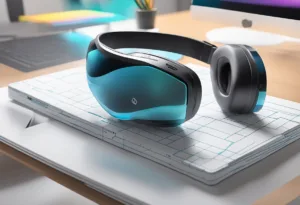
Design and Development Standards
AR design and development standards are essential for creating immersive and engaging AR experiences. These standards ensure that AR experiences are consistent across multiple platforms and devices, and adhere to certain parameters. Designers should consider standards such as the OpenXR standard, which helps to ensure compatibility across different AR platforms. Designers should follow best practices for 3D design, including optimizing models for performance and ensuring that textures and lighting are properly implemented.
Onboarding and User Guidance
Onboarding and user guidance are crucial aspects of AR design. Designers should aim to create intuitive and easy-to-use interfaces that guide users through the AR experience. This can be achieved through the use of gesture and voice commands, as well as visual cues such as arrows or tooltips. Furthermore, designers should consider the use of tutorial sequences or interactive guides to help users understand the AR experience.
Visual Design Considerations
Visual design is a key component of AR design. Designers should aim to create visually appealing and engaging AR experiences that are consistent with the brand or product. This can be achieved through the use of high-quality 3D models, textures, and lighting, as well as the use of animation and sound effects. Designers should consider the use of tools such as Cinema 4D to create dynamic and immersive AR experiences.
Adhering to best practices in AR design can help to create engaging and immersive AR experiences that are consistent across multiple platforms and devices. Designers should consider standards such as the OpenXR standard, as well as best practices for onboarding and user guidance and visual design considerations. By following these best practices, designers can create AR experiences that are intuitive, engaging, and visually
appealing.
10 AR design ideas
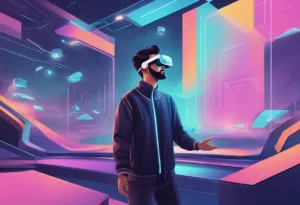
- Virtual interior design assistant
- AR-enhanced educational textbooks
- Interactive historical landmarks tour
- AR for retail try-on experiences
- Virtual business cards and resumes
- AR-enhanced board games and puzzles
- Fitness apps with AR personal trainers
- AR cooking assistant for recipes
- Language learning with AR immersion
- AR navigation and wayfinding systems
Virtual interior design assistant AR design ideas
When embarking on AR design ideas for a virtual interior design assistant, begin by researching the target audience’s needs and preferences. This concept should allow users to visualize furniture and decor in their own space before making a purchase. Start with a user-friendly interface that lets customers select and place 3D models of furniture within their live camera feed.
Ensuring a high level of realism in texture and lighting will improve the user experience. Integrate a feature that measures spaces to recommend appropriately sized items. Collaboration with furniture retailers could provide an extensive catalog of items to choose from. Remember to test the app in various lighting conditions and room sizes for optimal functionality.
AR-enhanced educational textbooks AR design ideas
To initiate AR design ideas for AR-enhanced educational textbooks, focus on creating interactive content that supplements traditional learning materials. Identify key educational concepts that could benefit from 3D visualization and interactivity. Collaborate with educators and subject matter experts to develop accurate and engaging content.
The AR features could include animated diagrams, historical reenactments, or scientific simulations that students can interact with. These features should be designed to enhance understanding and retention of complex subjects. Implement user feedback mechanisms to continuously improve the educational content based on the learners’ experiences. Prioritize ease of use to ensure that the technology enhances rather than hinders the learning process.
Interactive historical landmarks tour AR design ideas
Developing AR design ideas for an interactive historical landmarks tour involves creating an immersive storytelling experience. Begin by selecting historically significant sites and researching their backgrounds to craft compelling narratives. The AR experience should bring history to life by overlaying historical images, reenactments, and informative text onto the modern-day view of the landmarks.
Consider adding gamification elements to engage users, such as scavenger hunts or quizzes based on the historical facts they learn. Work with historians and cultural institutions to ensure the accuracy and sensitivity of the content. It’s important to design the app to be accessible on-site or remotely, allowing for a wider audience to enjoy the experience.
AR for retail try-on experiences AR design ideas
Launching AR design ideas for retail try-on experiences requires a focus on realism and accuracy. The goal is to enable customers to try on clothing, accessories, or makeup virtually. Start by developing advanced AR technology capable of mapping products onto the user’s body or face in real-time with precision.
Partner with retailers to integrate their product catalogs into the app, providing a wide range of options for users. The user interface should be intuitive, allowing for easy navigation between different products and styles. Implement robust facial and body recognition software to ensure that the virtual try-on experience is as close to reality as possible. This can help reduce return rates and increase customer satisfaction by providing a more confident buying experience.
Virtual business cards and resumes AR design ideas
For AR design ideas centered around virtual business cards and resumes, the key is to create a professional networking tool that stands out. Start by designing a platform where users can create and customize their virtual business cards and resumes.
Incorporate AR features that allow recipients to view the information in an interactive format, such as 3D models or videos that users can engage with through their smartphone cameras. Networking features could include the ability to exchange virtual cards with a simple gesture or scan, and to store and organize received cards in a digital wallet. E
nsure privacy controls are robust, allowing users to control what information is shared and with whom. This concept could revolutionize the way professionals connect and share their credentials.
AR-enhanced board games and puzzles AR design ideas
Creating AR design ideas for AR-enhanced board games and puzzles begins with selecting popular games that could be enhanced through augmented reality. The aim is to add a new dimension to traditional gameplay. Design the AR components to bring the game board and pieces to life with animations and interactive elements that respond to the players’ actions.
Integrate social features that allow players to compete or collaborate with others remotely. Consider the educational potential of AR puzzles that can teach concepts through interactive problem-solving. Ensure the app is user-friendly, with clear instructions and tutorials to guide players unfamiliar with AR technology.
Fitness apps with AR personal trainers AR design ideas
To start AR design ideas for fitness apps with AR personal trainers, concentrate on creating a personalized workout experience. The AR personal trainer should provide real-time feedback and guidance as users perform exercises. Develop a variety of workout routines that cater to different fitness levels and goals.
Use motion tracking technology to analyze the user’s form and provide corrections or encouragement. Incorporate a feature that allows users to set up their virtual trainer in any space, making home workouts more engaging. The app should track progress over time and adapt the workout intensity based on the user’s performance.
AR cooking assistant for recipes AR design ideas
For AR design ideas like an AR cooking assistant, the focus should be on simplifying the cooking process with step-by-step guidance. Start by building a comprehensive database of recipes that can be augmented with AR technology.
Users should be able to view 3D models of ingredients, utensils, and cooking techniques right in their kitchen. Implement features that provide real-time assistance, such as timers and temperature settings, and that can adjust recipes based on the number of servings needed.
The AR experience could also include interactive elements like spice level adjustments and ingredient substitutions. Design the app to be hands-free, allowing users to navigate through steps with voice commands or gestures. This cooking assistant could transform the way users engage with recipes and help them become more confident in the kitchen.
Language learning with AR immersion AR design ideas
Starting AR design ideas for language learning with AR immersion involves creating an environment that simulates real-life conversations and scenarios. The app should use AR to overlay objects in the user’s environment with their names in the target language. Integrate interactive dialogues with virtual characters to practice speaking and listening skills.
The AR system could recognize spoken words to provide immediate feedback on pronunciation and usage. Design the app to adapt to the user’s learning pace, introducing new vocabulary and grammar rules as they progress. Gamification elements like points and levels can motivate learners to continue their language studies. This immersive approach to language learning can make the experience more engaging and effective.
AR navigation and wayfinding systems AR design ideas
To initiate AR design ideas for navigation and wayfinding systems, focus on creating an intuitive guide for indoor and outdoor environments. The system should use AR to overlay directional cues and waypoints onto the real world, helping users navigate complex spaces like airports, malls, or campuses. Develop a user-friendly interface that allows users to input their destination and receive visual and auditory navigation instructions
Frequently Asked Questions

What software is essential for creating AR designs?
There are many software options available for creating AR designs. Some popular ones include Unity, Vuforia, ARToolKit, and Wikitude. Unity is a widely used game engine that also supports AR development, while Vuforia is an AR platform that provides image and object recognition. ARToolKit is an open-source AR library, and Wikitude is a cross-platform AR SDK. The choice of software depends on the specific needs and requirements of the AR project.
How does AR design enhance the driving experience in vehicles like BMW?
AR design can enhance the driving experience in various ways, such as providing real-time navigation, displaying vehicle information, and enabling gesture-based controls. For example, BMW’s Head-Up Display (HUD) uses AR technology to project information such as speed, navigation, and warnings onto the windshield, allowing drivers to keep their eyes on the road. AR design can also be used to create immersive driving experiences, such as virtual test drives and interactive car manuals.
Are there any free tools available for beginners in AR design?
Yes, there are several free tools available for beginners in AR design. Some popular options include AR Studio by Facebook, ARCore by Google, and Spark AR Studio by Facebook. These tools provide a user-friendly interface for creating AR experiences without the need for extensive coding knowledge. However, it’s important to note that free tools may have limitations in terms of features and customization options.
What are the best apps for designing augmented reality experiences?
There are several apps available for designing augmented reality experiences, depending on the specific needs and requirements of the project. Some popular ones include Adobe Aero, SketchAR, and Augment. Adobe Aero is a 3D design and animation tool that allows users to create AR experiences without the need for coding. SketchAR is an app that uses AR technology to guide users in drawing and painting, while Augment is an AR platform that provides tools for creating product visualizations and marketing materials.
What are the key considerations when building an AR design project?
When building an AR design project, there are several key considerations to keep in mind. These include defining the project goals and objectives, selecting the appropriate hardware and software, creating compelling content and interactions, testing and optimizing the user experience, and ensuring compatibility with different devices and platforms. It’s also important to consider the ethical and legal implications of AR design, such as privacy concerns and intellectual property rights.
What role do downpipes play in AR design for automotive applications?
Downpipes are not directly related to AR design for automotive applications. Downpipes are a component of the exhaust system in vehicles that help to reduce backpressure and increase engine performance. However, AR design can be used to enhance the driving experience by providing real-time information and immersive visualizations, as discussed earlier.




